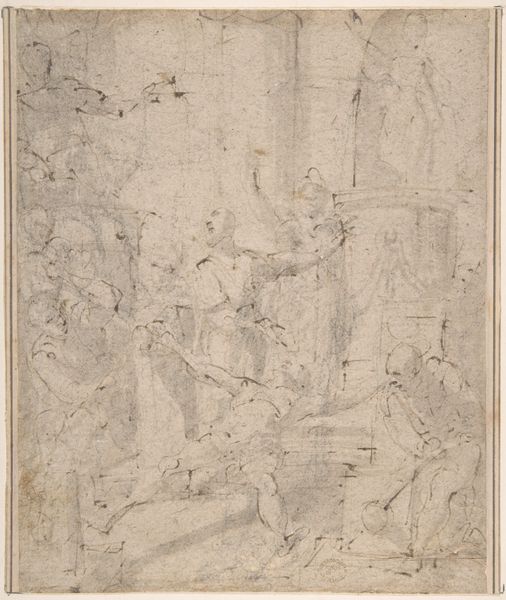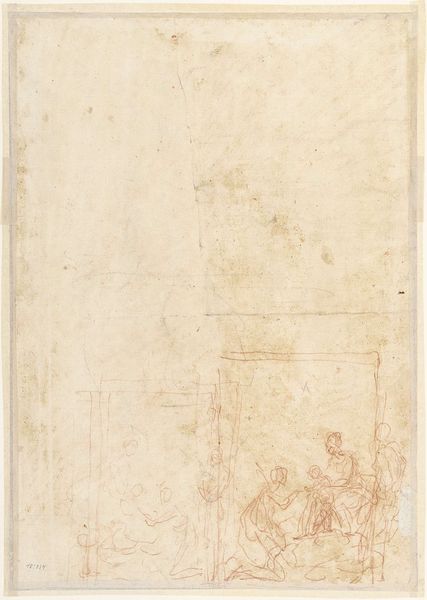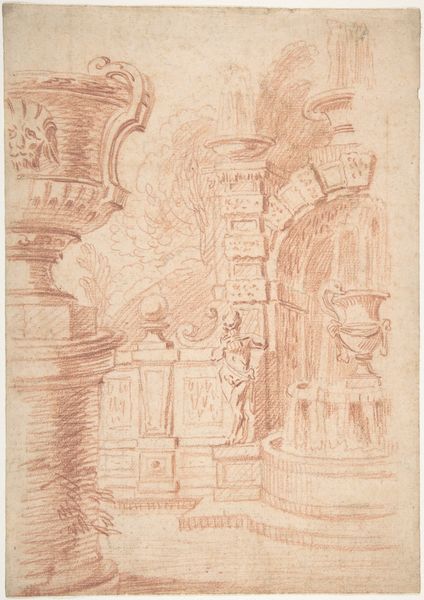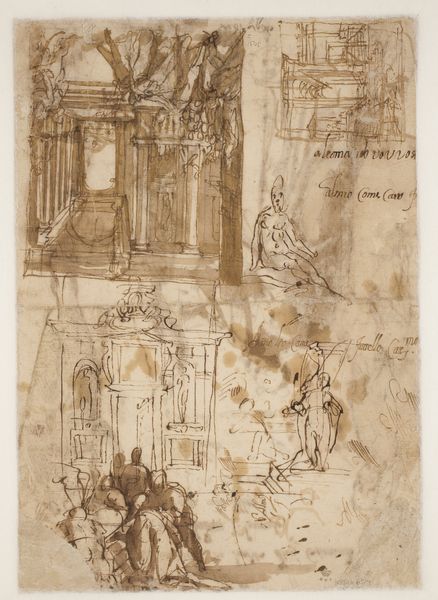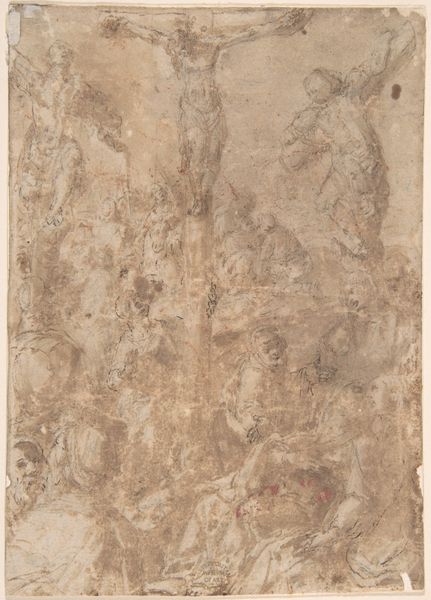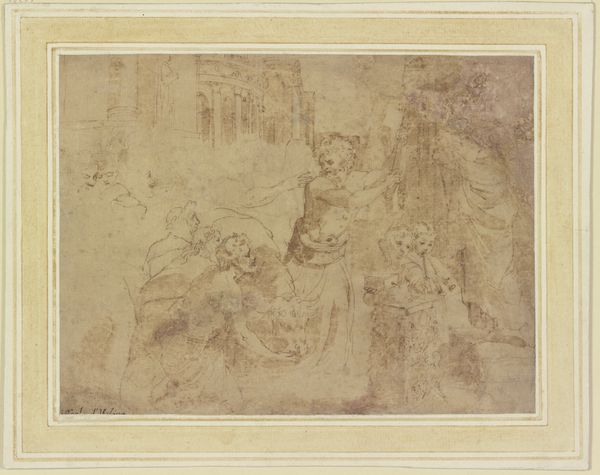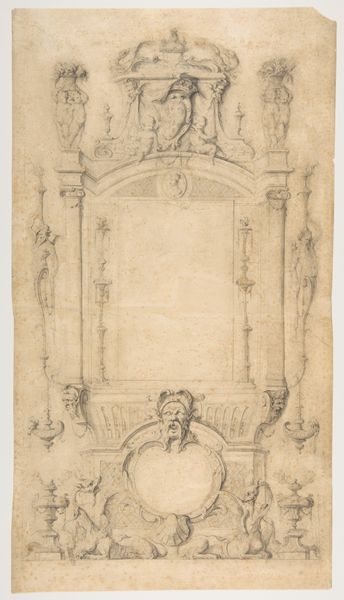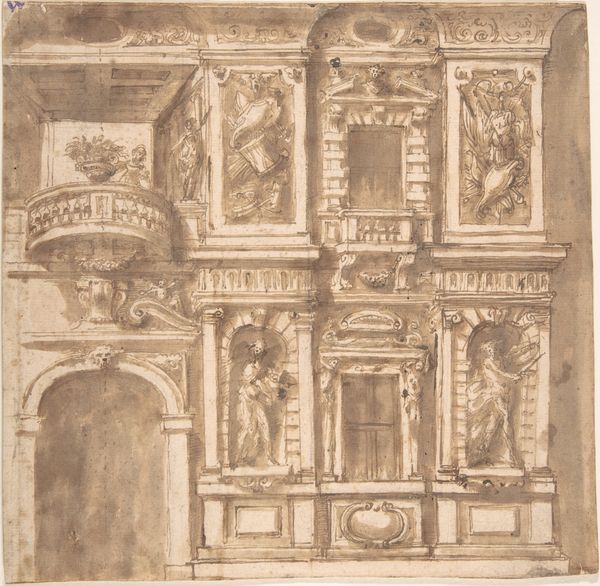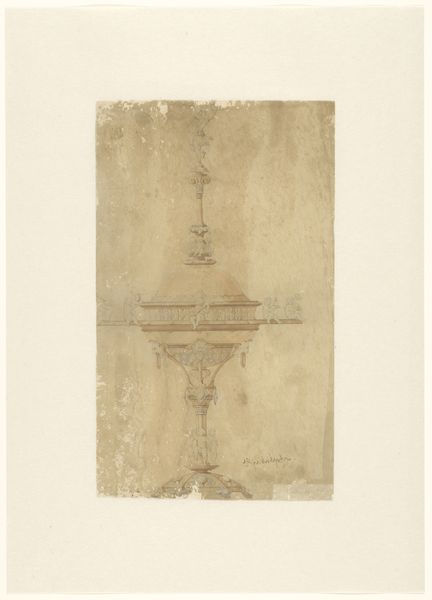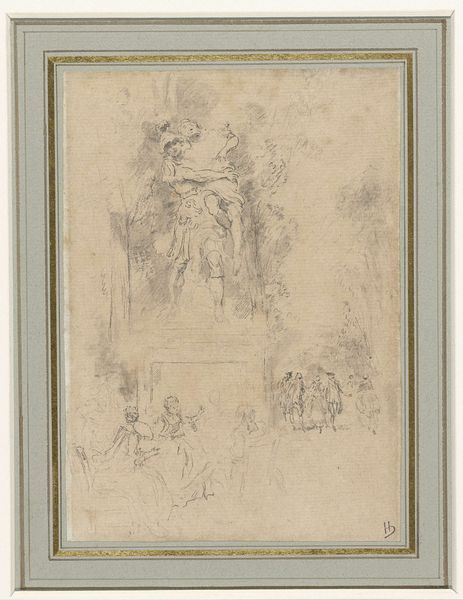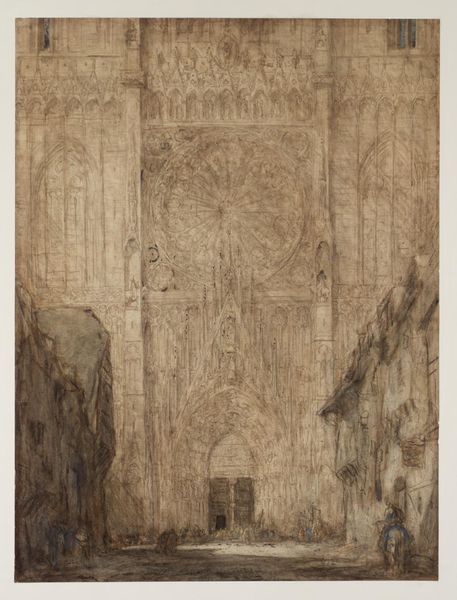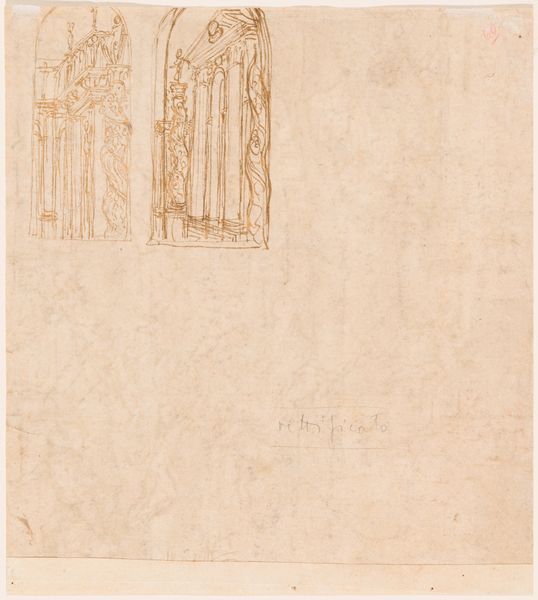
drawing, print, paper, pen
#
portrait
#
drawing
#
toned paper
#
narrative-art
#
animal
# print
#
paper
#
men
#
pen
#
history-painting
#
italian-renaissance
Dimensions: 11 5/8 x 10 13/16 in. (29.6 x 27.5 cm)
Copyright: Public Domain
Editor: So, this drawing, "King Herod Receiving the Three Magi," made sometime between 1450 and 1500 by Martin Schongauer... it’s striking how much it feels like we're glimpsing a scene almost lost to time. It looks so fragile. What stands out to you when you look at it? Curator: It’s fascinating how Schongauer uses a narrative we think we know so well – the visit of the Magi – and infuses it with complex symbolism. Consider Herod: enthroned, yes, but note his guarded posture. What symbols of power do you observe, and what emotional weight do they seem to carry here? Editor: I see his crown and scepter. But he doesn’t seem very secure, almost like he's wary of the Magi, even threatened. Is that intentional, do you think? Curator: Precisely. Think about the cultural memory surrounding Herod. He represents earthly power threatened by spiritual authority. Schongauer likely understood the potent psychological drama inherent in this encounter. What does it suggest about the perceived conflict between earthly and divine rule during this period? Editor: That makes sense. So, even something that appears straightforward, like the Magi offering gifts, is laden with deeper cultural meaning. Curator: Absolutely. The gifts themselves – gold, frankincense, myrrh – are not just valuable objects; they represent kingship, divinity, and sacrifice, foreshadowing Christ’s life and destiny. They're layered with meaning that transcends the immediate scene. The visual language speaks volumes about societal values and anxieties of the time. Editor: This has given me a completely new way to see the piece; not just as a biblical scene, but as a mirror reflecting the anxieties of its own era. Curator: Exactly! And perhaps our own. Images persist precisely because these emotional and symbolic layers continue to resonate.
Comments
No comments
Be the first to comment and join the conversation on the ultimate creative platform.
